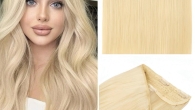
Guide to Lace Front Wigs: Transform Your Look with Confidence
Introduction to Lace Front Wigs
Lace front wigs have revolutionized the world of hair styling, offering versatility, convenience, and an incredibly natural appearance. These wigs provide a unique solution for those looking to change their hairstyle without committing to a permanent alteration. Whether for fashion, convenience, or to manage hair loss, lace front wigs are becoming a go-to choice for many. In this comprehensive guide, we will delve deep into the fascinating world of lace front wigs—from their definition and components to their maintenance and styling tips.

1. What are Lace Front Wigs?
Understanding Lace Front Wigs
Lace front wigs are artificial hairpieces that feature a sheer lace material along the front hairline. This lace is designed to create a seamless and natural-looking transition from the wig to your scalp, making it less visible than other types of wigs. The rest of the wig can be made from either human hair or synthetic fibers, depending on the desired look and budget.
Components of Lace Front Wigs
Lace front wigs consist of several key components:
- Lace Base: This is the sheer material that covers the front part of the wig. It can be made from either Swiss lace or French lace, each offering different levels of durability and invisibility.
- Hair Strands: The hair can be made from natural human hair or synthetic fibers. Human hair wigs provide the most natural appearance and styling versatility, while synthetic wigs are generally more affordable and easier to maintain.
- Cap Construction: The interior cap provides structure and comfort. Different cap constructions offer varying levels of breathability, adjustability, and fit.
2. Benefits of Lace Front Wigs
Natural Appearance
One of the most significant advantages of lace front wigs is their ability to mimic a natural hairline. The lace front allows for hairstyles that can be parted in any direction, giving wearers the freedom to experiment with their look without the worry of visible wig lines.
Versatility in Styling
Lace front wigs come in various styles, colors, and lengths, allowing individuals to switch up their appearance on a whim. Whether you’re looking to rock vibrant colors, short bobs, or long luxurious waves, lace front wigs make it all possible.
Convenience and Low Maintenance
Wearing a lace front wig is an excellent option for those who lead busy lives. With the right application, these wigs can last several weeks between adjustments, making them a convenient alternative to daily styling. Furthermore, they require minimal daily maintenance compared to natural hair, which needs styling, washing, and conditioning.
Protection for Natural Hair
Using lace front wigs can also protect your natural hair from environmental damage, styling tools, and chemicals found in hair products. By giving your natural hair a break, you can promote healthier growth.
3. Choosing the Right Lace Front Wig
Determine Your Hair Goals
Before purchasing a lace front wig, it’s essential to identify your hair goals. Consider whether you’re looking for something to wear daily, for special occasions, or simply for a temporary style change.
Face Shape and Wig Styles
Choosing a wig that complements your face shape is crucial. Different styles may enhance your features better than others. Here’s a quick guide:
- Oval: Most styles suit oval faces, including bobs, long waves, and updos.
- Round: Longer styles that add height and volume work best, along with side-swept bangs.
- Square: Soft waves and layers help to soften the angular features associated with square faces.
- Heart-Shaped: Off-center parts and chin-length bobs are excellent choices for heart-shaped faces.
Material Choice: Human Hair vs. Synthetic
Deciding between human hair and synthetic fibers is vital. Human hair wigs provide a realistic look and feel, allowing for heat styling. However, they come at a premium price. On the other hand, synthetic fibers are often pre-styled, making them a low-maintenance option but with limitations in styling versatility.
Color Selection
When selecting the color of your lace front wig, consider your skin tone, personal style, and the purpose of the wig. It’s also worth noting that you can never go wrong with a color that closely resembles your natural hair, as it can be seamlessly integrated.
4. Applying and Adjusting Lace Front Wigs
Proper Application Techniques
Successful application of lace front wigs is crucial for achieving a seamless and natural look. Here’s how to do it:
- Prep Your Hair: If you have natural hair, braid it back or use a wig cap for a flat profile.
- Select the Right Adhesive: Depending on how long you plan to wear your wig, choose between wig adhesive, tape, or gel. Each option offers different levels of hold.
- Positioning the Wig: Carefully position the wig, ensuring the lace front lines up with your natural hairline. Press down to secure the wig in place.
Adjusting Fit and Comfort
Lace front wigs typically come with adjustable straps for a customized fit. Tightening or loosening these straps can help ensure comfort and security throughout the day. Additionally, utilize wig clips or silicone grips for added security, especially during activities.
5. Maintaining Lace Front Wigs
Cleaning Your Lace Front Wig
Proper maintenance significantly extends the life of your lace front wig. Follow these steps for cleaning:
- Detangle Gently: Use a wide-tooth comb or wig brush to remove tangles before washing.
- Use Mild Shampoo: Fill a basin with lukewarm water and add a small amount of mild shampoo. Swirl the wig in the water gently for about 5 minutes, then rinse thoroughly.
- Condition the Hair: Apply a conditioner specifically designed for wigs. Leave it on for a few minutes before rinsing with cool water.
Drying and Storage
After washing, gently blot the wig with a towel to remove excess moisture. Avoid wringing it out, as this can cause damage. Allow the wig to air dry on a wig stand or a clean surface away from direct sunlight. When storing, place it on a wig stand or in a box to maintain its shape.
Styling Your Lace Front Wig
When it comes to styling, you can use heat tools on human hair wigs, but be mindful of the heat settings. For synthetic wigs, it’s advisable to avoid heat unless labeled as heat-resistant. Instead, opt for non-heat styling methods—like braiding or pinning—for a change in style.
6. Styling Techniques for Lace Front Wigs
Creating Natural-looking Styles
One of the wonderful things about lace front wigs is their versatility in styling. Here are some techniques to achieve a natural look:
Baby Hairs
- Creating Baby Hairs: To make your lace front wig appear more realistic, you can create baby hairs along the hairline. Use a razor or small scissors to cut a few strands to a shorter length and style them with a light hold gel.
- Swooping and Laying: Use a toothbrush or an edge brush to swoop the baby hairs down, emulating a natural hairline.
Parting Options
- Middle vs. Side Parting: Experiment with middle and side parts to see which complements your face shape best. A side part can create a more dramatic look, while a middle part offers an effortlessly chic vibe.
- Zig-Zag Part: For a trendy look, consider a zig-zag parting that can add dimension to your style.
Heat Styling Your Lace Front Wigs
When using heat styling tools on human hair lace front wigs, remember to always apply a heat protectant spray first. Here’s how to style:
- Curling: Use a curling wand set to a low temperature for soft waves or tighter curls, depending on your desired style.
- Straightening: For a sleek look, use a flat iron. Section the hair to ensure even and efficient straightening.
Updos and Braids
- Messy Buns: Create a messy or sleek bun with your lace front wig for a comfortable yet stylish look.
- Braids: Incorporate braids into the hairstyle for added texture. A braided crown or side braid can elevate your look while still appearing casual.














Leave a Reply